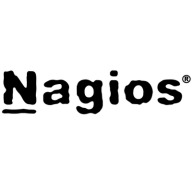

Splunk Observability Cloud and Nagios Fusion are competing products in IT monitoring. Splunk Observability Cloud appears to have the upper hand due to its integration and advanced analytics, while Nagios Fusion is strong in network monitoring and plugin support.
Features: Splunk Observability Cloud provides real-time analytics, AI capabilities, and a comprehensive visualization dashboard suitable for dynamic environments and advanced data analysis. Nagios Fusion offers strong network monitoring features, a wide range of plugins, and is ideal for complex IT infrastructures.
Ease of Deployment and Customer Service: Splunk Observability Cloud simplifies deployment with a SaaS model, supported by extensive customer service for seamless onboarding. Nagios Fusion requires a more complex on-premises installation, complemented by robust community support and documentation.
Pricing and ROI: Splunk Observability Cloud involves higher subscription costs but offers quick implementation and higher ROI through improved operational insights. Nagios Fusion has lower initial setup costs and provides long-term ROI via flexibility and customization.
| Product | Market Share (%) |
|---|---|
| Splunk Observability Cloud | 1.8% |
| Nagios Fusion | 0.3% |
| Other | 97.9% |

| Company Size | Count |
|---|---|
| Small Business | 20 |
| Midsize Enterprise | 10 |
| Large Enterprise | 43 |
Nagios Enterprises delivers official products, services, and solutions for and around Nagios – the industry standard in enterprise-grade IT infrastructure monitoring. With millions of users worldwide, Nagios is the undisputed champion in the IT monitoring space. Our team of dedicated professionals works to ensure total customer satisfaction with all the services we provide. Our extensive network of partners helps extend Nagios services and solutions to new organizations and markets worldwide to meet a variety of business needs. Nagios Enterprises was founded in 2007 by Ethan Galstad. Ethan created what would later become known as Nagios in 1999, and currently serves as the President of Nagios Enterprises.
Splunk Observability Cloud offers sophisticated log searching, data integration, and customizable dashboards. With rapid deployment and ease of use, this cloud service enhances monitoring capabilities across IT infrastructures for comprehensive end-to-end visibility.
Focused on enhancing performance management and security, Splunk Observability Cloud supports environments through its data visualization and analysis tools. Users appreciate its robust application performance monitoring and troubleshooting insights. However, improvements in integrations, interface customization, scalability, and automation are needed. Users find value in its capabilities for infrastructure and network monitoring, as well as log analytics, albeit cost considerations and better documentation are desired. Enhancements in real-time monitoring and network protection are also noted as areas for development.
What are the key features?In industries, Splunk Observability Cloud is implemented for security management by analyzing logs from detection systems, offering real-time alerts and troubleshooting for cloud-native applications. It is leveraged for machine data analysis, improving infrastructure visibility and supporting network and application performance management efforts.
We monitor all IT Infrastructure Monitoring reviews to prevent fraudulent reviews and keep review quality high. We do not post reviews by company employees or direct competitors. We validate each review for authenticity via cross-reference with LinkedIn, and personal follow-up with the reviewer when necessary.